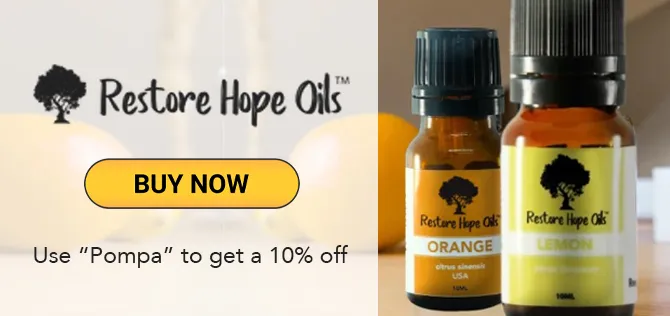Water fasting, an ancient healing strategy, remains a classic go-to in changing the lives of clients and has greatly improved my own health and that of my family. However, it is not something that gets by with light treading nor a strategic plan. Intensive water fasting requires experienced hands and minds to guide you through safely to get the best results. In this article, we’ll review 3 water fasting experiences (those of two docs and my son) shared on CHTV to provide a deeper understanding of the ancient healing technique and its real-life implementation.Why Fast?
Fasting accomplishes several things. The first? It is the best—the very best—way to control glucose and insulin. If you want to live longer than anyone healthy, control your glucose. Without the constant spikes in glucose and insulin, your body is at leave to burn its own fuel, to run on its own juice. In turn, testosterone levels remain sound. Each time we eat, testosterone levels plummet, which spike glucose and insulin, all of which power inflammation and aging. Yet, it’s ill-advised to push calories away. With fasts, eating habits change because your body no longer needs it. The second accomplishment: Autophagy. Autophagy (or “self-eating”) is the process by which the body naturally removes cellular debris. Bad cells (which are not able to adapt to using fat for energy) die off because the body “eats” the bad cells and proteins first. Autophagy has been the shock of shrinking tumors, of magically erased skin tags, dying viruses, and more. All these massive benefits can occur when autophagy kicks into high gear. Researcher Dr. Valter Longo noted in a study1 that a water fast of 4 or more days can trigger a reset of the immune system. You see as we get older, our blood contains too many memory T-cells, each programmed to combat a particular microbe, and not enough naive T-cells, which respond to new challenges. Fasting purges and rebuilds the immune cell population with naive T-cells.
A third reckoning: epigenetics —turning the bad genes to good, powering on the good ones, and shutting off the bad ones. Whether by the force of one-day fasts or elongated fasts, genetics start to maneuver into their natural state, altered healthily and hugely affected by our dietary choices. And, fourth: hormone sensitivity. Like before, gear up your body to listen to those hormones by putting it through a fast, cleansing it, and making room for that physical change.
Even during a short fast, there’s a rapid increase in growth hormone, one reason behind my weekly fasts (at least once a week, for a full 24 hours), which we’ll explore later. A weekly mini-fast revolves around a simple idea: optimizing hormones is not about gaining more hormones, but about becoming more hormone-sensitive. Hormones like testosterone, or any that affect healing, are dramatically amped during a fast.
CHTV episode 108 shares the experience of Dr. Derrick Dempsey, whose 22-day water fast was the root solution for personal health issues. For Dr. Dempsey, growing up with a pastor father, the ideology behind fasting was when you fast, not if you fast. The biblical ties are a huge gauge for many of us, including myself. The second “why” for fasting stems from his responsibility to the family—he’s no stranger to the truth that spousal support and family leading requires good health.
Dr. Dempsey takes us through his fast, a project which started out as a 5-day fast and evolved into 22 days of only consuming water. Having experienced fasting with whey water and broth previously, he was prepared for the task, which brings us to the first concept in coaching—mental preparation. By days two and three, despite the longing for meals, Dr. Dempsey powered through. Then the switch, a sort of mindset altering, occurred between days 4 and 6, where he developed a slight aversion to food and his mental clarity was re-charged. “You’re fine with water,” he told himself. “Just keep going.”
As the fasting progressed, Dr. Dempsey noticed some erratic changes in his mental capacity. As a youth, bludgeoned down by four head traumas and never feeling fully recovered, he initially notes that his mental clarity skyrocketed. Like many of us, he would have to read and reread things several times over to get the gist. With fasting, however, he found that wasn’t the case—his acuity soared. Such is the case with brain fog. Time and time again, a water fast has proven to scrape away symptoms of the “brain fog.” It reactivates the brain and hones focus.
Another consideration is rapid weight loss. When carefully executed, the fast can reduce large portions of weight, uprooting deep toxins stored in the tissue. However, weight loss isn’t the primary goal for everyone—and for that, there’s good news! The innate intelligence knows and seeks balance: something we call homeostasis. The body knows how to eat damaged tissue and bad DNA while routinely avoiding muscle. This situation is marvelous for tumors—the body will eat those. Endometriosis, a condition which is alive with scar tissue, is swallowed up in the innate feeding process of bad cells. In Dr. Dempsey’s case, chronic snoring and congestion ceased during the fast.
Alongside that weight loss, however, is the audible weight gain. With the rapid healing of the gut, the fast can be a strategic tool for gaining muscle. With growth hormone and testosterone increasing, and the gut healing, the body can assimilate food better. We note YouTube sensations the Hodge twins, whose 19-hour fast, powered by a 5-hour feeding period, is credited as the process for bodybuilding.
Know Your Numbers
We must consider glucose and ketone measurements during fasting. As the fasting day progresses, glucose should be dropping, and ketones should be rising. Keeping careful track during the fast, ketone numbers should stay between .5 mmol/L and 5.0 mmol/L to be in ketosis, with some reaching as high as 7.0 mmol/L. As for glucose, according to keto researcher Prof. Thomas Seyfried, the “target zone” is when glucose numbers are in the 60s with ketones 3.0 mmol/L or more. Hitting the target zone is telling towards the destruction of bad cells—if these numbers are showing up, the body is cleansing those bad cells in just fashion.
R & R
In prolonged instances of fasting, getting rest is the best situation for your body. Although the fast may not void you of energy (in fact, you’ll be amazed at the energy you feel), without the protein stores of healing, exercise can be damaging. Of course, daily life is exempt, and simple tasks are fine for most to accomplish. Remember, water fasting is a time for cellular healing; conserve energy, and let the body take care of itself.
It’s all Mental
Back to the basics: mental preparation. Dr. D notes you need to gear up with support. Many face emotional attachments to food—it’s common and can be difficult to overcome. As you begin fasting, be wary of support. You may meet resistance, so rally up a coach or sidekick to keep you accountable, or is even willing to do it with you. As any athlete gains progress with the aid of a coach, so will you. Through proper coaching, you learn the tools to apply to help take back your health and life. These changes require allegiance: devotion, teachability, and determination. While alternative healthcare soars, we seek a different approach—removing interference (R1), stressors, and letting the body do the healing.
Break the Fast Safely
Before you jump at the chance to throw a weeks’ worth of nutrition down your throat, remember that you’ve just been in extensive, quiet healing: the digestive tract is still in rest mode. In Dr. Dempsey’s case, he scheduled his fast-breaking down to the minute, and ended it with some SueroGold whey water and chicken broth, and continued that track for 4 days, eventually adding spinach and eggs to the mix. A gentle transition is key to getting the best results from the fast and avoiding undermining efforts.
Next, let’s discuss water fasting in relation to diabetes, insulin management, and ketosis. For this, we brought on Dr. Don Clum, DC to CHTV who beat out Dr. Dempsey’s record with his 30-day water fast. Like Dr. Dempsey, Dr. Clum had not previously planned on the prolonged fast—what started as 3 days moved swiftly to 5, and then to 10, and so on. Yet, this isn’t Dr. Clum’s first experience with fasting—he recounts instances with moles and lesions, non-biopsied but diagnosed skin cancers, which formed on his neck and back. These diagnoses inspired action like juicing, fasting which helped the lesions and moles to fight their way off his body within six months. Dr. Clum admits to the struggles of powering through but vocalizes his energy, positivity, and strength that levied in return during his fasts.
Before starting, Dr. Clum relays the need for context: the “why” in your fasting. Any individual expecting success in this department must know why they are doing this, and where it places in your larger vision for health. We explore pre-programs, and pseudo fasting and Dr. Clum administers a series of methods for breaking into that fasting period.
Fasting to Control Blood Sugar
In an aim to debunking the myth that “diabetics can’t fast,” Dr. Clum concedes that it’s a possibility—if it’s done with the coaching aid of trained healthcare specialists, nutritionists, and doctors. Dr. Clum’s primary goal has been to decipher a route of reversing the pathology of diabetes, uprooting the condition, challenging the national diabetes prevention program, a “gold standard” in the medical realm.
In the case of diabetes, we take to insulin-resistance: the powering force of metabolic syndrome, diabetes, and a myriad of other conditions. Dr. Clum’s model concretes type two diabetes as a liver issue and scopes it through three potential lenses: an insulin lens, a blood sugar lens, and a hormonal lens. Making sense of blood sugar levels, he debunks common misconceptions on how blood sugar works. He plays on the role of the liver and glucagon, which, instead of pushing insulin into the cells, as many believe, only indicates that the liver is no longer releasing sugar. Much of this connects back to the liver—the sole caretaker of cholesterol, glucose, insulin—and bringing the liver to change first.
Dr. Clum notes how simple daily tasks can so easily raise blood sugar, and why it’s so difficult to lower. Carbs and insulin are profoundly linked to cooked foods, which means diabetes hasn’t been in our genetic code for long. Because of it, our pancreases evolved to adapt to the shooting of insulin against the processed enemies. By eating more raw foods, you might be giving your pancreas a load off.
Fatty Liver Concerns
Recent studies have circulated and lead to a plaguing worry about an increase in nonalcoholic fatty livers. Dr. Clum separates visceral fat from adipose and strikes back at how fasts that go low insulin or ketogenic burn off visceral fat foremost. We aim to recognize that even the skinniest of people, who feel fasting isn’t for them because of a “lack” of muscle, is wrong to cross out fasting: a good water fast will go after the toxic visceral fat, minimizing those toxins, utilizing those tissues. Your body is that capable.
Eat Less Often
Dr. Clum points out some strategies he’s put into play, namely the strict implementation of three solid meals a day. Drawing away from the “hormonal lens” of the old American Diabetics Association, which typically assigned patients’ to five or six meals per day, three meals a day—regardless of nutritious content—is a grappling key in altering our liver makeups. As I always say, “Don’t eat less, eat less often.” Helping people differentiate the symptoms between food dependency and low blood sugar, by limiting the number of times they sit for a meal, has been eye-opening in the medical field.
Eating less to live longer is something we greatly value. It’s not all caloric, either—eating until feeling full is no crime. When you reduce the number of times you sit down for food, and take away the crossovers and in-betweens and snack times, at the end of the day, you’ve eaten less.
Exercise and Fasting
We then tackle glycogen flexibility—or physical activity. There are three moving phases that require change: what you eat when you eat, and how you move. As skeletal muscle becomes endocrine tissue, it’s possible to up your mitochondria, to turn that into what Dr. Clum describes as your engine. Doing this broadens the size and capability of your “engine”—most people bear small engines with small gas tanks, which leave their blood sugar to spill over through their blood and continue dangerously onward.
Moving into more physical activity, Dr. Clum points out the 4 “genres” of exercise which we can categorize: weightlifting, traditional cardio, intensity training, and stress relief cardio. Much like dietary tracts and fasting methods, variation is key—many studies report that doing one specifically is less healing than doing two in various degrees. In terms of fasting, it’s best to tread lightly—literally. Most workouts require a dose of stress relief cardio, which is not something to mistake as your actual exercise, as Dr. Clum suggests. Yet, we can both agree that resistive training falls under a lesser valued category when it faces the diabetic world.
Looking at the sympathetic versus the parasympathetic nervous systems, which Dr. Clum compares to the gas and the breaks, there’s an astounding mix-up between what people consider sympathetic dominance, but what is actually a parasympathetic weakness. From a diabetic standpoint, this is prevalent. We focus vehemently on the growth hormone, and despite its success, what we really want more of is repair. The confounding issue with this growth is that it doesn’t exclude much, so you’ll experience growth in extra tissue, tumors, and other areas.
Fasting and Meal Timing
Debunking myths about exercise and food, we attempt to unveil an answer about the most perfect time to eat: before or after workouts. We’ve come across a variety of shocking evidence that cite the dangers of eating before a workout, divulging in protein shakes, and spiking your sugar and insulin. Its results are jarring—no hormonal response, no stamina for your workout, and no energy.
Another point is the use of natural electrolytes, specifically whole sea salt. This, as opposed to a Gatorade sports drink, is pivotal in the post-workout phase. The “cold” body factor that comes with exercise, and most specifically in fasting, is often eliminated by salt.
Transitioning Back to Food
Turning back to Dr. Clum’s 30 day fast, we approach his method of breaking the fast, which included a high fat, moderate protein diet that he carefully edged back into consuming. Unable to finish his first small meal, we note how tough solid foods can be on the body after a long break. Soft-cooked vegetables and berries and ferments tend to be easier on the reformed digestive tract.
Changing DNA with Fasting and Keto
A huge highlight of fasting: genetics start to change. As bad cells fail to adapt, they lose their resource and die off, giving the body leeway to shift and edge closer into ketosis. A method that stems from this is diet variation, moving people in and out of these different phases with ketosis, intermittent fasting, or prolonged fasting.
Ketosis, an ancient healing strategy that we love, is another key to changing the epigenome. It’s important to realize that we are not in constant ketosis and that bodies have no issue in the production of sugar. What we haven’t grasped, however, is that insulin is the primary factor for whether or not you’re in ketosis. Insulin has a plethora of roles—it weasels into the cell, into the mitochondria, through the Krebs cycle, and blocks fats from producing energy. This can lead to the altering of the body’s gluconeogenesis, which will eventually blockade the body from burning fat.
Feast and Famine Cycles of Hormone Optimization
Touching on diet variation, we look at clans in Tibet and the Hunza people, who have foraged for years without diseases. These diets, based on summertime vegetarianism and springtime restrictive practices, are what bring ketosis and fasting to its ancient holding. Learn more about Diet Variation in CHTV episode 157 here.
Getting to the Source
We delve back into cellular toxicity, summing up our agreement that diabetes is initially a liver problem that loops back around to a multi-therapeutic approach. It’s important to do things upstream—for the cell and the brain. Taking back your health is achievable by way of ancient healing strategies, a varied diet, intermittent daily and block fasting, and more.
Again, I must reiterate the importance of supervision—a trained coach to aid you through something as complex as ancient healing strategies. You need someone versed and experienced to get you on a healthy fasting regime and dietary track to help reach your health goals.
Finally, in CHTV 164 my son Simon shared his own fasting experience, after being inspired by one of my clients who healed eczema from a water fast. His was a quick decision, a very sure one, and the thirteen-year-old found himself headlong into an 11-day water fast.
Simon’s Numbers
Simon’s glucose dropped and ketones increased by day two. Although ketones are usually an energy supplier, Simon didn’t have much of that. One key to understand is that his young body isn’t fat adapted yet – it doesn’t use ketones. We expound on a few of the symptoms he bore – nausea, lightheadedness, a lot of body odors and welts around the knees. These first three days are typically accompanied by a white-coated tongue, tedious symptoms of illness, dizziness, and lack of energy.
However, as custom, around day 4, Simon started feeling better. He noted an increase in energy, and we observed his uplifted attitude and improved sleeping habits. Forcing the body to utilize ketones was a giant factor in improving Simon’s sleep. Before long, he was in ketosis.
If Simon Can Do It…
To get a better idea of Simon, prior to the fast, his diet habits were carb-centered. Of all my children, Simon tends to be the most food-addicted, and his initial craving during the fast was cheese. However, since breaking the fast, Simon attests to having no cravings or addictions. What happens here is that grehlin and leptin, hormones which affect the microbiome, alter drastically during the fast and communicate to the hypothalamus to shut off hunger. Due to this, the body knows to avoid muscle. Oftentimes, when people try their hand at low-carb or low-calorie diets, the body doesn’t avert from the muscle, and taps into that, weakening you. With water fasts, innate intelligence recognizes muscle and protects it from being absorbed. Besides this, the body knows to go into autophagy, which we’ve discussed before the burning out of bad cells and fats.
Fasting provides a good chance to change your palate. For parents of vegetable haters, there is hope! A great breakthrough was that Simon, who previously had an aversion to vegetables of any kind, came off his fast, tried broccoli, and enjoyed it. In addition, we discovered his slight intolerance to dairy when he attempted to delve back into cheese. This is unsurprising since conventional dairy can be a root issue to many chronic gut problems for many individuals.
With ketones hitting 6.5 and glucose ranging in the forties and fifties, Simon shed around 20 pounds of weight. These are perfect target numbers for autophagy. And, for a 13-year-old, the process has brought a lot of spectators reciting that “if he can do it, I can do it.”
Partial Fasting for Transition
In breaking fasts, people routinely make the mistake of loading up on calories. A partial fast, which wedges between 500 and 1,000 calories, was just the subject of a study2 over the course of 5 days. Between humans and mice (the mice, only being subject to the fast for 3 days), the results sparked interest. The real goodness lies between 500 and 1,000 calories per day, with a focus keen on your fats and raws. For this study, the group fasted the five days’ equivalent in the month, and then shifted back to their regular diet. Unsurprisingly, the weight quickly returned, but the inflammation markers remained decreased. After three months of repeating this cycle, the subjects grew healthier and healthier, despite falling back on their regular diets. What does this show? Diet variation works: the simple switch propelled their bodies into health. It also demonstrates the power of fasting, prolonged or not. Of course, despite not being a fast, the diet still mimicked results of fasting, which garnered the title.
For partial fasting, try 500 and 1,000 calories each day dependent on weight, focusing on the fats and raws. For those with adrenal fatigue, this is going to be a simpler, less mental method to start. Intermittent fasting, the daily concourse of three square meals with no outside foods, met with partial weekly fasting, is essential to ease into that system. In terms of partial fasts, organize inventory in terms of fruits, veggies, fats, and fiber, choosing 2-4 servings in each per daily depending on calorie goals. Keep it simple!
Signs to Break the Fast
After all your efforts, how can you determine when your body is ready for food? This question pops up a lot in our world, and it comes with many physical indicators that you should watch out for. First, through the process, your tongue may change color from white to yellow, to even black. The second it reverts to its healthy pink, you know autophagy has done its job, and you’re ready to return to food. Second: energy levels and glucose numbers bounce around during the fast, but if you experience fatigue that lasts beyond a single day, your body may be reaching for nourishment. It’s a good indicator. Third: if your weight loss comes to a halt, it’s time to break your fast. Simon eased back into foods with a steaming bowl of grass-fed beef bone broth.
Which Water is Best?
For those who question the dialogue around water for fasting- is distilled okay? Is sparkling? – it’s beneficial to remember that we’re not teasing the body with gullies of water, but rather depriving it of minerals and food sources to give it a proper cleaning. Our bodies are fully capable of discerning the difference between H20 and CO2, and I often prefer reverse osmosis water with a sprinkle of sea salt here and there. As for the big weight loss question, many clients assume thinness and fasting to be all-in-one. However, once you begin eating again, the body can smartly distinguish and force muscle growth, which is a healthy, fluid mechanism for muscle gain.
My hope is that you have a better sense of the Why and How behind water fasting, and that we’ve given you a clearer sense of where to start and what’s best for you. This ancient healing strategy has changed many lives when no other tool worked. Sometimes the simplest and oldest proven strategies provide the most profound results.
R4: Reducing Cellular Inflammation and Oxidative Stress
R5: Reestablishing Methylation
Why Your Brain Quits Working
PompaCore Cellular Detox ™ — A Top 5 Strategy to Create Your Best Heath Ever
Cancer as a Metabolic Disease — An Interview With Dr. Thomas Seyfried
R1: Removing the Source of Toxins
The Ketogenic Diet: An Answer for More Than Weight Loss Resistance
Diet Variation Strategies: The Quickest Ways to Lose Weight
My Multi-Therapeutic Approach
Electrolyte Concentrate











